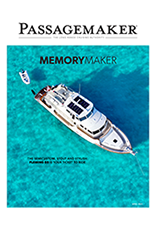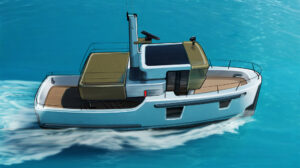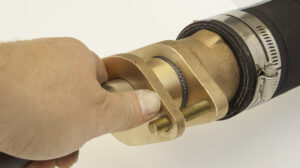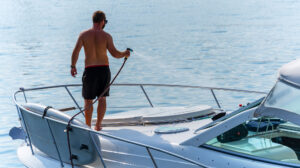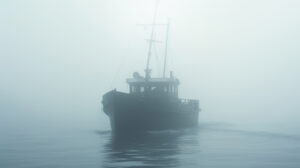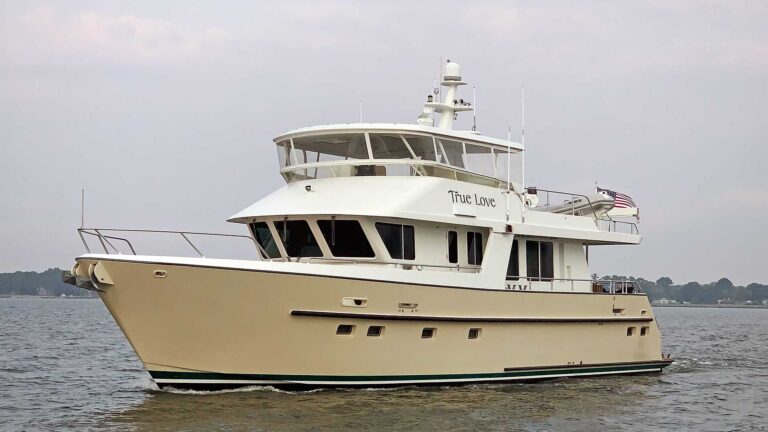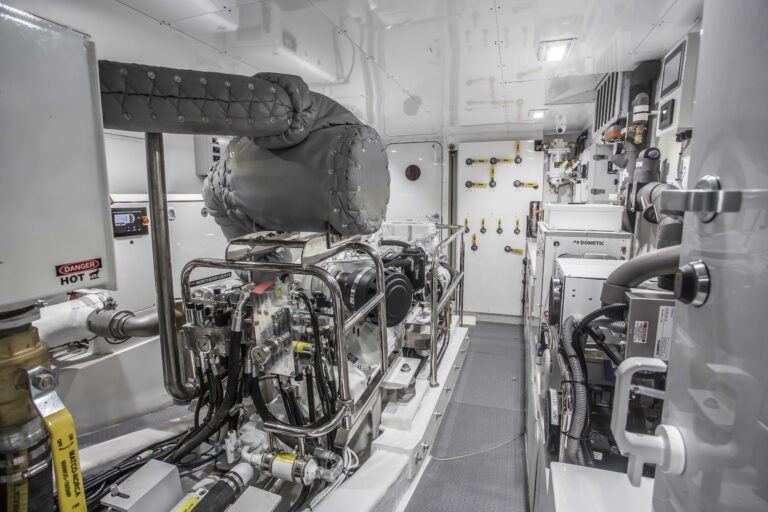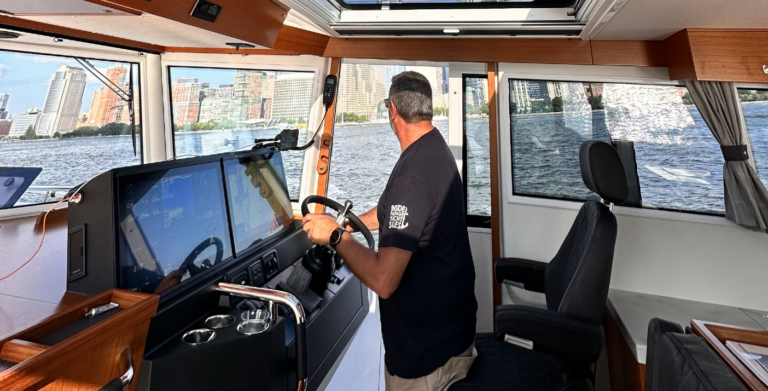The workboats that ply the North Sea have made an indelible impression on the crew of our yacht design atelier. We draw constant inspiration from the high flared bows, beefy weatherproof cowlings and large pilothouses of the commercial fleets that earn a living on the sea.
The craft’s intended purpose is defined even before its keel is laid, and many of these boats work hard until they are no longer useful. Sadly, many are sent to the scrapyard because of age or European Union regulation. But once the work era has ended, they can be given a second life as a regal and functional private vessel for liveaboard cruising, charter and more.
For this purpose, we have chosen the eurokotter as an ideal platform for a conversion to PM-8, a recreational boat. First built in the early 1980s, the eurokotter was designed to work within a near-shore zone of the Netherlands as trawlers and twin-rigged fishing boats. Nearly all of them were built with a load-line length below 79 feet, which allows our concept to stay within the European Union’s CE Certification rules.

With simple, durable steel hulls and aluminum superstructures, the eurokotters have an ideal foundation. However, we would need to completely shift around the layout—it’s a workboat, so everything is crammed into the available volume surrounded by bulkheads. For a liveaboard passagemaker, we would need to open up the space by adjusting the superstructure to make it more functional and comfortable.
The main deck is often the gathering point on longer journeys, so we envision a large, country-style kitchen that would take up the entirety of the salon’s port side, starting from the glass bulkhead aft. A lounge and dinette flank the galley, with a day head serving the area. The country kitchen also functions as a connective visual element between the aft deck and foredeck.
Moving forward via a watertight door, there’s an open workspace where the commercial crew would handle nets for hauling in fish to a hold below. Here, we have positioned an alfresco dining area protected by the flybridge overhang and the bow’s steel hood. On her port side, we have a welded-in cradle for the dinghy, repurposing the steel structure of the fishing mast to launch and retrieve the small craft.

Our cockpit is meant to serve a myriad of functions: sun lounging, swimming, snorkeling, diving and more. The transom gate will drop to create a beach club, which is rimmed by lockers for stand-up paddleboards, kayaks, dive gear and deck furniture. Shielded by the after section of the flybridge, a bar and dining space is made even more functional with a drop-down transom to starboard. It’s the ideal spot for easy egress to her tender. We want this space to have true four-season functionality, so we would add both isinglass enclosures and infrared heaters.
Beneath the heavy cowl of the bow, where fishermen would stow tools and gear (or hide from incoming waves), we created a cozy lounge with a gas-fired stove, minibar and library. Openings in the bulwark provide visibility sideways and aft.
Her enclosed flybridge, accessed by a staircase in the salon, will have a split-level arrangement of the wheelhouse, so the captain can maintain some contact with the main deck. For longer or overnight cruising, the area can be cordoned off with blackout shades for optimal situational awareness. The lower level of the flybridge is further defined by a forward, wraparound glass atrium, a lounge on the aft deck, and quarters for the captain. Atop this is a glass skylounge, which provides commanding views and doubles as a cinema or game room.
Belowdecks, her three en suite staterooms—a full-beam master and two VIPs—are accessed by a central corridor that also leads to the aft deck. For maximum privacy, the staterooms are set well apart and cleaved by an amidships space that can be used as a gym or for stowage. Crew quarters are optional in her bow, or the area can be used as a workspace.
To power Project PM-8, we envision a diesel-electric setup with a pair of 265-kW generators (equivalent to 355 hp) mated to electric pod drives. Azipods or traditional diesel engines could work as well. As with her commerical brethren, access to all service points for maintenance would be considered.
Carrying 4,500 gallons of fuel, PM-8 has an estimated range of 4,100 nautical miles at 8 knots, with a 10 percent reserve.
PROJECT PM-8
LOA: 78ft. 4in.
Beam: 2ft. 9in.
Draft: 7ft. 6in.
Displacement: 350,000 lbs.
Fuel: 4,500 gal.
Water: 600 gal.
Power: 2x 355-hp diesels
This article was originally published in the April 2024 issue.
